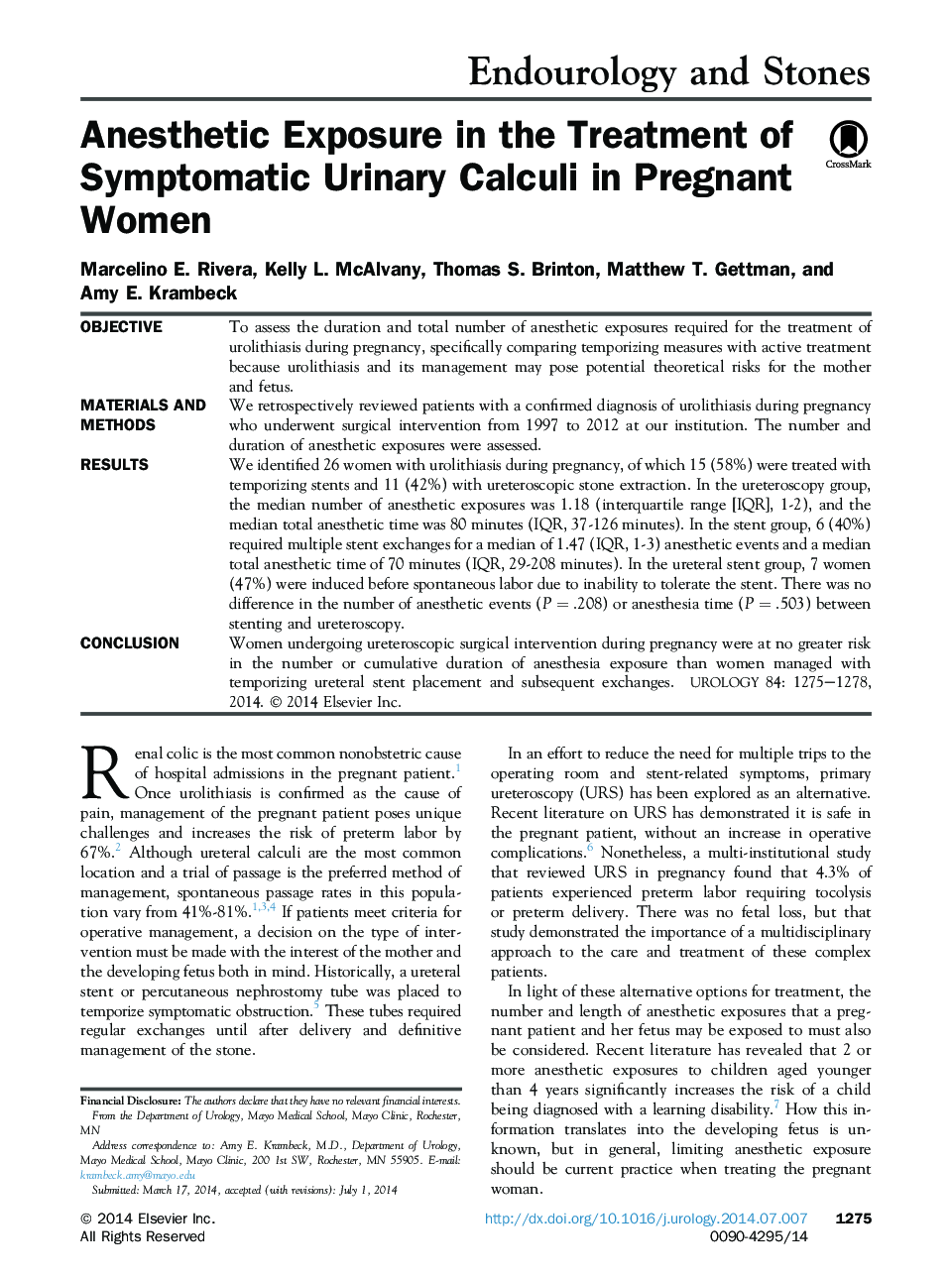| Article ID | Journal | Published Year | Pages | File Type |
|---|---|---|---|---|
| 3898219 | Urology | 2014 | 4 Pages |
ObjectiveTo assess the duration and total number of anesthetic exposures required for the treatment of urolithiasis during pregnancy, specifically comparing temporizing measures with active treatment because urolithiasis and its management may pose potential theoretical risks for the mother and fetus.Materials and MethodsWe retrospectively reviewed patients with a confirmed diagnosis of urolithiasis during pregnancy who underwent surgical intervention from 1997 to 2012 at our institution. The number and duration of anesthetic exposures were assessed.ResultsWe identified 26 women with urolithiasis during pregnancy, of which 15 (58%) were treated with temporizing stents and 11 (42%) with ureteroscopic stone extraction. In the ureteroscopy group, the median number of anesthetic exposures was 1.18 (interquartile range [IQR], 1-2), and the median total anesthetic time was 80 minutes (IQR, 37-126 minutes). In the stent group, 6 (40%) required multiple stent exchanges for a median of 1.47 (IQR, 1-3) anesthetic events and a median total anesthetic time of 70 minutes (IQR, 29-208 minutes). In the ureteral stent group, 7 women (47%) were induced before spontaneous labor due to inability to tolerate the stent. There was no difference in the number of anesthetic events (P = .208) or anesthesia time (P = .503) between stenting and ureteroscopy.ConclusionWomen undergoing ureteroscopic surgical intervention during pregnancy were at no greater risk in the number or cumulative duration of anesthesia exposure than women managed with temporizing ureteral stent placement and subsequent exchanges.
